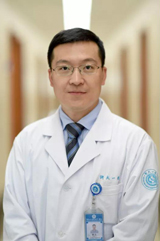People concerned about cardiovascular health must be familiar with the terms such as "atherosclerosis" or "coronary heart disease." Vascular sclerosis, commonly known as atherosclerotic cardiovascular disease, is one of the most common diseases in the world with high morbidity and mortality , which seriously endangers human health. Currently, the most effective therapeutic approach for coronary heart disease is stenting. However, vascular intimal hyperplasia resulted from stent implantation leads to in-stent restenosis, which causes recurrent cardiovascular events. Therefore, clarifying the mechanism of in-stent restenosis and finding a better therapeutic target to improve the efficiency and safety of stents are the most significant topics in cardiovascular research.
On December 15, 2017, Professor Zhang Li from The First Affiliated Hospital, Zhejiang University School of Medicine and Professor Xiao Qingzhong from the William Harvey Research Institute at Queen Mary University of London released an innovative achievement, titled "miRNA-22 is a Novel Mediator of Vascular Smooth Muscle Cell Phenotypic Modulation and Neointima Formation", on TOP cardiovascular journal Circulation (Impact Factor: 19.309).

This article focused on the mechanism of neointima hyperplasia after vascular injury and systematically described the role of non-coding small RNA---miR-22 in vascular diseases, providing a novel therapeutic target. Specifically, miR-22 was able to suppress neointimal hyperplasia and reduce vascular stenosis after arterial injury by targeting MECP-2 and EVI-1. Of note, EVI-1 is a functional target of Arsenic trioxide (As2O3) and this study found that miR-22 and arsenic trioxide have similar downstream pathways.
More significantly, these findings showed that miR-22 may serve as a new coating drug, providing an idea for the development of new drug-eluting stents. Previously, arsenic trioxide-eluting stents developed by Prof. Ge Junbo from Zhongshan Hospital of Fudan University showed comparable efficacy and safety with foreign counterparts. Furthermore, they could dramatically reduce the financial burden of patients. The miR-22 / EVI-1 signalling axis discovered in this study explains the mechanism of anti-restenosis of arsenic trioxide-eluting stents, which will help us to move forward on the road of indigenous innovation.
Professor Zhang Li’s group is performing follow-up researches at the moment. On the one hand, miR-22 or antagonist of EVI-1 -eluting stents will be developed and be evaluated on their efficiency, safety and economy. On the other hand, miR-22 or EVI-1 antagonist will be used as a coating molecule in drug eluting balloon, which can facilitate the development of a new interventional approach with non-permanent stent implantation. Once succeed, it will largely benefit patients with coronary heart disease, stroke and peripheral vascular disease.
PhD student Yang Feng and Doctor Chen Qishan are the co-first authors of the article. Professor Zhang Li and Professor Xiao Qingzhong are the co-corresponding authors. The affiliation of first author and corresponding author is The First Affiliated Hospital, Zhejiang University School of Medicine. This project was funded by the National Natural Science Foundation and Outstanding Youth Science Grants of Zhejiang Province.
Introduction of Professor Zhang Li

Professor Zhang Li, Deputy Directorof the Institute of Cardiovascular Research of Zhejiang University and Deputy Chief of Department of Cardiologyhas been dedicated to research into stem cell and vascular cell biology, and pathogenesis and intervention of atherosclerotic vascular disease over the past decade. He is The Fellow of the American College of Cardiology (FACC) and Fellow of the European Society of Cardiology (FESC). More than 40 articles have been published by him on Circulation, Circulation Research, ATVB and other international cardiovascular journals. He holds more than 10 grants including Major Research Plan of National Natural Science Foundation. He has won a number of scientific research awards including the second prize of the Chinese Medical Science and Technology Award , the first prize of Provincial Medical and Health Science and Technology Innovation Award, etc.